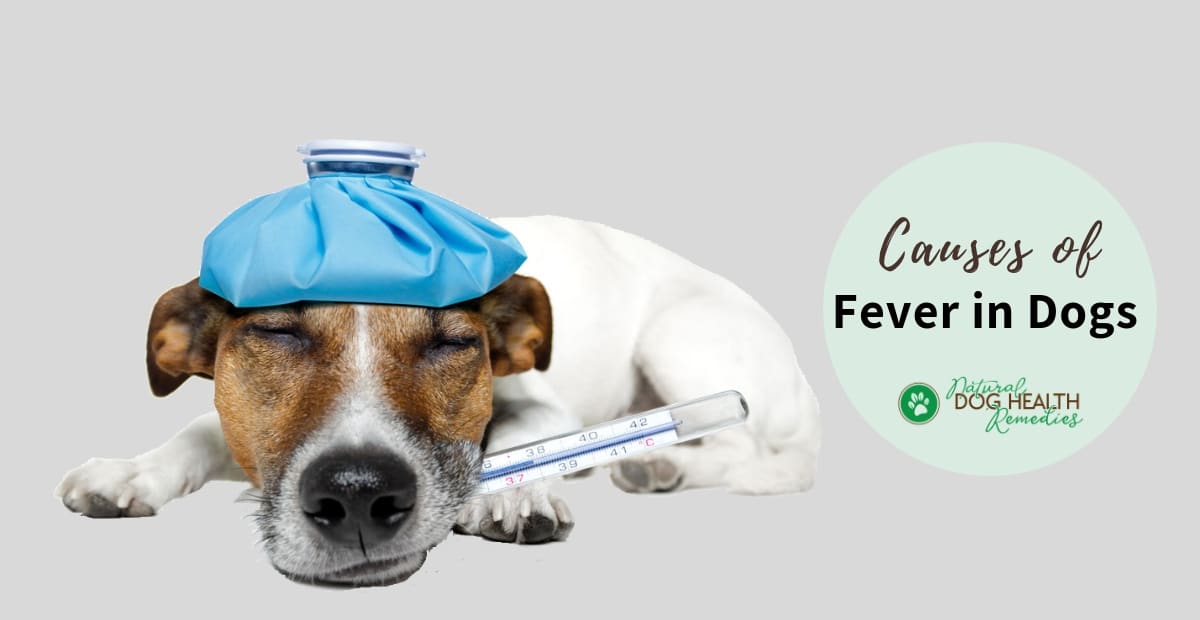Normal Dog Temperature
and Dog Fever Symptoms

Dogs have higher body temperature than we do. Therefore, even if your dog may feel hot or feverish to you, his body temperature may still be within normal limit.
Normal Dog Body Temperature
The normal dog temperature is 101.5°F (38.6°C). A body temperature of 102°F (38.9°C) or above is considered a fever.
Dogs can run a high fever of 104°F (40°C) and sometimes up to 105°F (40.5°C). According to many holistic veterinarians, we need not be alarmed unless the dog body temperature reaches 103°F, since a fever is generally a good sign - read Dog Fever below.
But if your dog's body temperature is elevated due to hot weather, then you need to take quick action to cool down the dog temperature to prevent heat stroke.
Symptoms of Dog Fever
How can you tell if your dog is having a fever?
There are various telltale signs. For example, dogs running a fever usually show some of these symptoms:
- Weak and lethargic
- Depressed
- Panting more
- Loss of appetite
- Dehydration (in cases of high fever)
But of course the only way to find out for certain whether your dog has a fever or not is to take his body temperature.
How To Take a Dog's Body Temperature
Here are the steps to follow when taking your dog's body temperature:
- Use a digital thermometer. DO NOT use a mercury thermometer to take dog temperature because if the thermometer happens to be sucked all the way into the rectum, it can break and the mercury can of course be very harmful to the dog.
- Lubricate the thermometer with petroleum jelly.
- If you have a big dog, do ask someone to restrain your dog by holding the front part of the dog's body.
- Insert the thermometer slowly and carefully about one inch into the rectum. Gently hold the thermometer in place and wait till it beeps.
- Gently slide the thermometer out and read the temperature.
Alternatively, if your dog is really uncooperative, you may consider getting a non-contact ear thermometer:
How To Take a Dog's Pulse
Here are the steps to follow when taking your dog's pulse:
- Use your index and middle fingers to feel inside of your dog's hind leg just below the point where it joins the body (the femoral artery resides there).
- A pulse occurs with every heart beat. You can count how many beats you feel in 15 seconds and then multiply it by 4. That will give you the pulse.
Normally, a dog's pulse is between 70 to 180 beats per minute.
Large dogs have a slower pulse - the larger they are, the slower pulse they have. On the other hand, puppies have a much fast pulse, up to 220 beats per minute.
A faster pulse usually indicates shock or fever; a very weak pulse indicates that you should call the vet immediately!
What Causes Fever in Dogs?
There are a lot of possible health problems that may cause fever in dogs, such as:
- Bacterial or viral infections, like canine influenza, distemper, parvovirus, leptospirosis, urinary tract infections, etc.
- Tick-borne disease, such as Lyme disease.
- Ingestion of toxins, such as anti-freeze, poisons, medications for people, etc.
- Vaccinations - sometimes dogs may develop fever after being vaccinated. Usually the fever will go away in a day or two.
- Cancer - more seriously, sometimes dogs with certain type of cancer could also have a fever.
These are just a few examples of problems that could cause a dog's temperature to go up. The bottom line? Always get a proper diagnosis if the dog's fever doesn't go down in a couple of days.
What To Do If Your Dog Has A Fever
 Holistic veterinarians view fever in dogs as a "symptom". It is a sign that the dog's body immune system is working hard to get rid of whatever bugs there are inside the body.
Holistic veterinarians view fever in dogs as a "symptom". It is a sign that the dog's body immune system is working hard to get rid of whatever bugs there are inside the body.
It is important, therefore, that if your dog is running a fever, look for other accompanying symptoms and try to find out the underlying illness causing the fever. If that is difficult, and if your dog's fever does not go away, then it's time to see your veterinarian.
What if your dog has a high fever (e.g. over 103°F) and you are not able to take him to the vet right away?
You need to help to lower the dog's temperature quickly. Splash a bit of tap water on the dog's face, neck, paws, and groin area.
You can then try to continue to reduce the dog's body temperature by using peppermint cold compresses. Peppermint is cooling and is effective in reducing body temperature. Here's what to do:
- Brew a strong peppermint tea (use at least 3-4 teabags, or 2-3 tablespoons of dried peppermint). To cool the tea quickly, pour it over ice cubes.
- Alternatively, add 2 or 3 drops of pure peppermint essential oil to a bowl of cold water.
- Soak several towels and wring them just until they stop dripping.
- Apply the compresses to the dog's head, neck, legs, and groin area.
- When the compresses become warm to body temperature, soak them again in the peppermint tea, and repeat for 15-20 minutes.
Be sure to also make your dog drink enough water to prevent dehydration.
Fever with No Other Symptoms
Sometimes a dog may develop a fever for no known cause and showing no other accompanying symptoms. In such a case, you may want to use some home remedies and natural ways to help your dog.
For example, using a homeopathic remedy is often recommended to speed up the body's curing process. For more information, visit our page on Fever Remedies For Dogs.

C.J. Puotinen, Natural Remedies for Dogs and Cats (Keats Publishing, 1999).
M. Goldstein, The Nature of Animal Healing (Ballantine Books, 2000).
R.H. Pitcairn, The Complete Guide to Natural Health for Dogs and Cats (Rodale, 2005).
D. Hamilton, Homeopathic Care for Cats and Dogs (North Atlantic Books, 1999).





